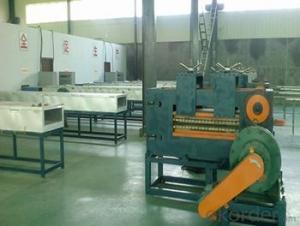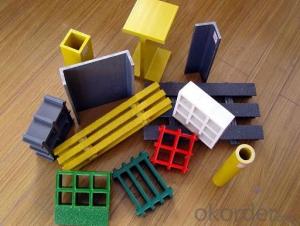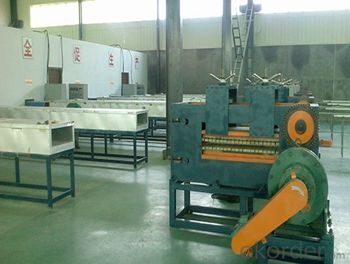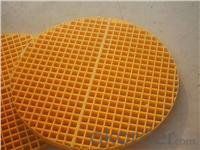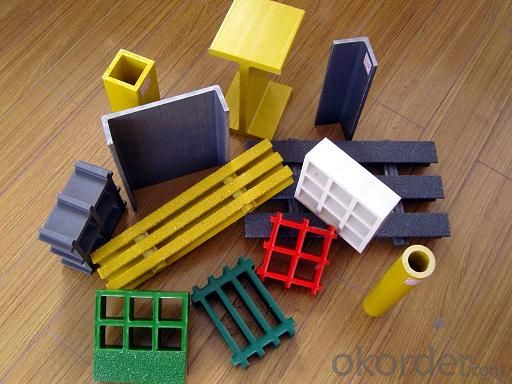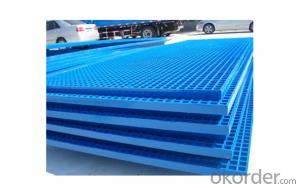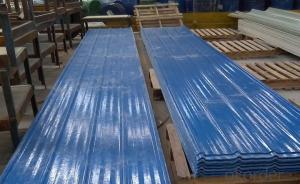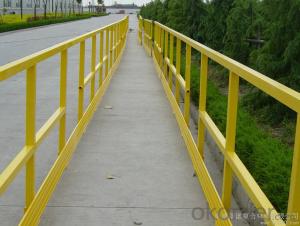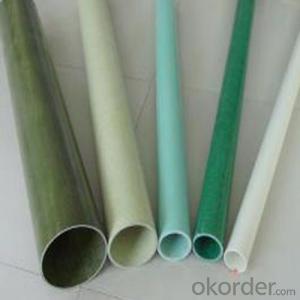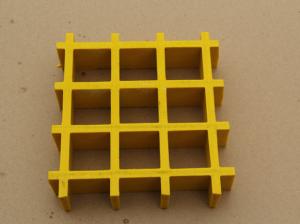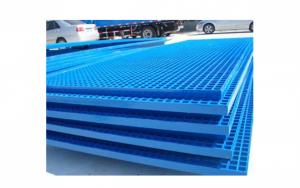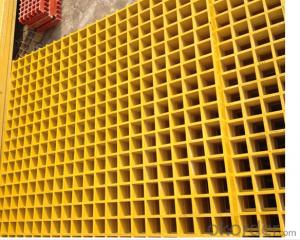FRP Pultrusion Profiles - GRP/FRP Plastic Pultruded Grating Fiberglass Floor Panels
- Loading Port:
- Shanghai
- Payment Terms:
- TT OR LC
- Min Order Qty:
- 50 m
- Supply Capability:
- 80000 m/month
OKorder Service Pledge
OKorder Financial Service
You Might Also Like
Specification
PRODUCT DESCRIPTION
FRP flooring panel is a big size profile which is made by pultrusion technology and in holistic shape, it could form a continuours close plane by unique self-lock structure,which could be used as load structures in various corrosion environments and could replace wood plate, aluminum plate or steel plate etc.
The product could add natural color grit on the surface,which is safe for the anti-slippery,besides it could obtain the natural appearance and no fadding for a long time.
Deck of cooling tower, plate of scaffold, floor of chip manufacturing, deck of bridge, rooftop, slope of architectural overhaul, structural floor, floor of light railcar, baffle of equipment, roof of cover, trench cover, footpath, weather plank.
FEATURES
a. anti-corrosion, non-rusty
b. lightweight and high strength
c. anti-flammable
d. anti-fatigue
e. anti-slippery and safety
f. anti-ageing
g. easy to installation and maintenance
h. excellent electromagnetism property
SPECIFICATION
Item No. | Height(mm) | Mesh Size(mm) | Standard Panel Size | Open Area | Weight(kg/m2) |
1 | 15 | 38 × 38 | 1220 × 3660 | 72% | 6.00 |
2 | 15 | 20 × 20 | 1247×4047,1007×4047 | 42% | 9.00 |
3 | 25 | 38 ×38 | 997 × 3050 , 1220 × 3660 | 69% | 12.32 |
4 | 25 | 40 × 40 | 1007 × 3007, 1007 × 4007, | 67% | 12.20 |
5 | 25 | 25 × 100 | 1009 × 3007 ,1209 ×3657 | 67% | 13.87 |
6 | 30 | 38 × 38 | 1220 × 3660 , 997 × 3050 | 69% | 14.60 |
7 | 30 | 40 × 40 | 1007 × 3007 , 1007 × 4007 | 67% | 14.28 |
8 | 30 | 20 × 20 | 1000 × 4000,1247×4047 | 42% | 18.10 |
9 | 38 | 38 × 38 | 997 × 3050 , 1220 × 3660 | 68% | 19.71 |
10 | 38 | 25 × 152 | 1226 × 3665 (Bearing bars to run length direction) | 56% | 22.40 |
11 | 38 | 20 × 20 | 1007 × 4007,1247×4047 | 42% | 22.50 |
12 | 40 | 40 × 40 | 1007 × 3007 ,1007 × 4007, 1007 × 4047 ,1247 × 4047 | 67% | 19.87 |
13 | 40 | 20 × 20 | 1247 × 4047 | 42% | 23.70 |
14 | 50 | 50.7 × 50.7 | 1225× 3660 | 69% | 22.17 |
15 | 60 | 38 × 38 | 1220 × 3660 | 47% | 50.43 |
16 | P38 | 38 × 38 | 1230 × 3670 | 68% | 17.5 |
17 | P30 | 38 × 38 | 1220 × 3660 | 69% | 14.0 |
PICTURES
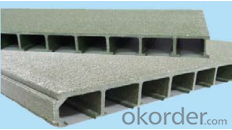
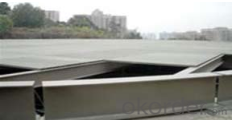
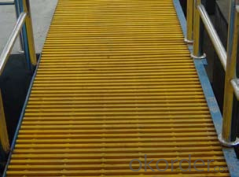
- Q: Can FRP pultrusion profiles be used in renewable energy projects?
- Yes, FRP pultrusion profiles can be used in renewable energy projects. FRP (Fiber Reinforced Polymer) pultrusion profiles offer high strength, durability, and corrosion resistance, making them suitable for various applications in renewable energy projects. They can be used in the construction of wind turbine blades, solar panel frames, and structural supports for renewable energy infrastructure. Additionally, FRP pultrusion profiles can provide cost-effective solutions by reducing maintenance requirements and improving the overall performance of renewable energy systems.
- Q: Can FRP pultrusion profiles be used in the production of electrical insulators?
- Yes, FRP (Fiber Reinforced Polymer) pultrusion profiles can be used in the production of electrical insulators. FRP pultrusion profiles are known for their excellent electrical insulation properties, making them suitable for a wide range of electrical applications. The high-strength and non-conductive nature of FRP materials make them ideal for insulating components in electrical systems, including insulators. FRP pultrusion profiles are made by impregnating continuous fibers, such as fiberglass, carbon fiber, or aramid, with a polymer resin, which is then cured and shaped using the pultrusion process. This results in a durable and lightweight material that offers excellent electrical insulation properties. Electrical insulators are used to prevent the flow of electric current between conductive materials or components. They are essential in electrical systems to maintain safety and prevent electrical leakage or short circuits. FRP pultrusion profiles can be designed and manufactured to meet the specific requirements of electrical insulators, including dimensional accuracy, mechanical strength, and electrical insulation performance. Additionally, FRP pultrusion profiles offer several advantages over traditional materials like wood, porcelain, or ceramics. They are corrosion-resistant, have a high strength-to-weight ratio, and can be easily customized to meet the specific needs of electrical insulator applications. FRP pultrusion profiles are also non-conductive, which is a crucial factor for electrical insulation. Overall, FRP pultrusion profiles are highly suitable for the production of electrical insulators due to their excellent electrical insulation properties, durability, lightweight, and customization options.
- Q: What is the shear strength of FRP pultrusion profiles?
- The shear strength of FRP (Fiber Reinforced Plastic) pultrusion profiles can vary depending on several factors such as the type and quality of fibers used, the resin matrix, and the manufacturing process. Generally, FRP pultrusion profiles have high shear strength due to the continuous fibers running along the length of the profile. The shear strength of FRP pultrusion profiles is typically determined through testing according to industry standards such as ASTM D2344 or ISO 14129. These tests involve subjecting the profile to a shear force until failure occurs, allowing for the calculation of the shear strength. The exact shear strength values for FRP pultrusion profiles can vary significantly depending on the specific composition and design of the profile. However, it is not uncommon for FRP pultrusion profiles to exhibit shear strengths in the range of 50-150 MPa (megapascals) or higher. This makes them suitable for a wide range of structural applications where shear forces are prevalent. It is important to note that the shear strength of FRP pultrusion profiles can be influenced by factors such as temperature, moisture, and exposure to chemicals. Therefore, it is essential to consider the specific environmental conditions and requirements of the application when determining the appropriate FRP profile to be used. Overall, FRP pultrusion profiles are known for their excellent shear strength, which contributes to their popularity and effectiveness in various industries such as construction, transportation, and infrastructure.
- Q: Can FRP pultrusion profiles be used in the construction of water treatment plants?
- Water treatment plants can utilize FRP (Fiber Reinforced Polymer) pultrusion profiles. These profiles possess several advantages that render them suitable for this purpose. To begin with, FRP pultrusion profiles exhibit resistance to corrosion. Water treatment plants encounter various corrosive substances, such as chemicals and moisture. Traditional materials like steel and concrete can degrade over time due to corrosion, resulting in maintenance complications and potential structural failures. Nevertheless, FRP pultrusion profiles possess a high resistance to corrosion, ensuring prolonged durability and reduced maintenance expenses. Furthermore, FRP pultrusion profiles are lightweight and possess high strength-to-weight ratios. This characteristic facilitates easy handling and transportation while maintaining structural integrity. Water treatment plants often necessitate structural components that can endure heavy loads and support equipment. FRP pultrusion profiles supply the required strength without adding excessive weight, making them an ideal choice for such applications. Additionally, FRP pultrusion profiles are non-conductive and possess exceptional electrical insulation properties. This attribute proves critical in water treatment plants where electrical apparatus and wiring are present. The non-conductive nature of FRP aids in preventing electrical hazards and guarantees safe operation. Moreover, FRP pultrusion profiles can be customized to fulfill specific design requirements. They can be manufactured in various shapes and sizes, allowing for design and construction flexibility. This adaptability renders FRP pultrusion profiles appropriate for a wide array of applications within water treatment plants, including structural supports, walkways, handrails, and equipment enclosures. In conclusion, FRP pultrusion profiles represent an exceptional option for the construction of water treatment plants due to their corrosion resistance, lightweight yet robust nature, electrical insulation properties, and customization possibilities. They provide long-lasting durability, reduced maintenance costs, and enhanced safety, thereby constituting a reliable and efficient solution for this critical infrastructure.
- Q: Can FRP pultrusion profiles be used in the construction of wastewater treatment tanks?
- Yes, FRP (Fiber Reinforced Plastic) pultrusion profiles can be used in the construction of wastewater treatment tanks. FRP materials are highly resistant to corrosion, making them suitable for harsh environments such as wastewater treatment facilities. Additionally, FRP pultrusion profiles offer high strength-to-weight ratio, durability, and low maintenance requirements, making them an ideal choice for constructing wastewater treatment tanks.
- Q: How do FRP pultrusion profiles perform in high-wind areas?
- FRP (Fiber Reinforced Polymer) pultrusion profiles are highly suitable for use in high-wind areas due to their exceptional performance characteristics. These profiles are engineered using a combination of continuous glass fibers and a polymer resin matrix, resulting in a lightweight yet incredibly strong and durable material. One of the key advantages of FRP pultrusion profiles in high-wind areas is their excellent resistance to corrosion. Unlike traditional materials such as steel or wood, FRP does not rust or rot when exposed to moisture or harsh weather conditions. This makes them ideal for coastal or hurricane-prone regions where wind-driven saltwater or heavy rain can cause accelerated deterioration in other materials. Additionally, FRP pultrusion profiles have a high strength-to-weight ratio. This means that they can withstand high wind loads without adding excessive weight to structures. Their lightweight nature allows for easy transportation and installation, reducing the overall costs and time required for construction projects in high-wind areas. Furthermore, FRP pultrusion profiles exhibit excellent dimensional stability, meaning they resist warping or deforming under extreme wind pressures. This stability ensures that structures utilizing FRP profiles maintain their integrity and functionality even in the face of strong winds. Moreover, FRP pultrusion profiles can be designed and manufactured to meet specific wind load requirements, making them highly customizable for various applications. They can be engineered to have specific flexural or tensile strengths, allowing for tailored solutions to suit the demands of high-wind areas. Overall, FRP pultrusion profiles are an excellent choice for use in high-wind areas due to their corrosion resistance, high strength-to-weight ratio, dimensional stability, and customization capabilities. These profiles provide a reliable, long-lasting, and cost-effective solution for structures exposed to intense wind loads, ensuring the safety and durability of the built environment.
- Q: Are FRP pultrusion profiles resistant to sulfuric acid?
- FRP (Fiber Reinforced Polymer) pultrusion profiles are generally resistant to sulfuric acid. The corrosion resistance of FRP profiles is one of their key advantages compared to traditional materials like steel or concrete. Sulfuric acid is a highly corrosive substance, but FRP pultrusion profiles can withstand its effects due to the inherent properties of the composite materials used in their construction. The corrosion resistance of FRP profiles is mainly attributed to the resin matrix that encapsulates the reinforcing fibers. Most commonly used resins in pultrusion, such as polyester, vinyl ester, or epoxy, have excellent chemical resistance properties, including resistance to sulfuric acid. However, it is important to note that the resistance of FRP pultrusion profiles to sulfuric acid can vary depending on several factors. The concentration and temperature of the acid, as well as the specific resin formulation used in the profile, can influence the overall resistance. In highly concentrated or elevated temperature environments, it is advisable to consult with the manufacturer or supplier to ensure the specific FRP profile meets the required resistance level. In general, FRP pultrusion profiles offer a high level of resistance to sulfuric acid, making them suitable for various applications in industries where this corrosive substance may be present, such as chemical processing, wastewater treatment, or mining.
- Q: Are FRP pultrusion profiles resistant to electromagnetic interference?
- Yes, FRP pultrusion profiles are generally resistant to electromagnetic interference (EMI). The use of fiberglass reinforced plastic (FRP) in pultrusion profiles provides excellent electrical insulation properties, which help to minimize the effects of electromagnetic interference. Unlike metals, which are conductive and can easily transmit electrical signals, FRP materials have high dielectric strength and low electrical conductivity. This makes FRP pultrusion profiles less susceptible to EMI and allows them to act as barriers to electromagnetic waves. Additionally, FRP materials can be further enhanced with additional layers or coatings to increase their EMI shielding effectiveness if required. Overall, FRP pultrusion profiles are a reliable choice for applications where resistance to electromagnetic interference is important.
- Q: Are FRP pultrusion profiles resistant to corrosion and chemicals?
- Yes, FRP pultrusion profiles are highly resistant to corrosion and chemicals. This is due to the inherent properties of the fiberglass reinforced plastic material, which is non-reactive and does not corrode or deteriorate when exposed to various chemicals or harsh environmental conditions. Additionally, the pultrusion manufacturing process ensures a uniform and consistent distribution of the reinforcing fibers, further enhancing their resistance to corrosion and chemicals.
- Q: Are FRP pultrusion profiles resistant to humidity or moisture?
- Yes, FRP pultrusion profiles are highly resistant to humidity or moisture due to their non-porous nature and the use of corrosion-resistant materials.
Send your message to us
FRP Pultrusion Profiles - GRP/FRP Plastic Pultruded Grating Fiberglass Floor Panels
- Loading Port:
- Shanghai
- Payment Terms:
- TT OR LC
- Min Order Qty:
- 50 m
- Supply Capability:
- 80000 m/month
OKorder Service Pledge
OKorder Financial Service
Similar products
Hot products
Hot Searches
Related keywords
